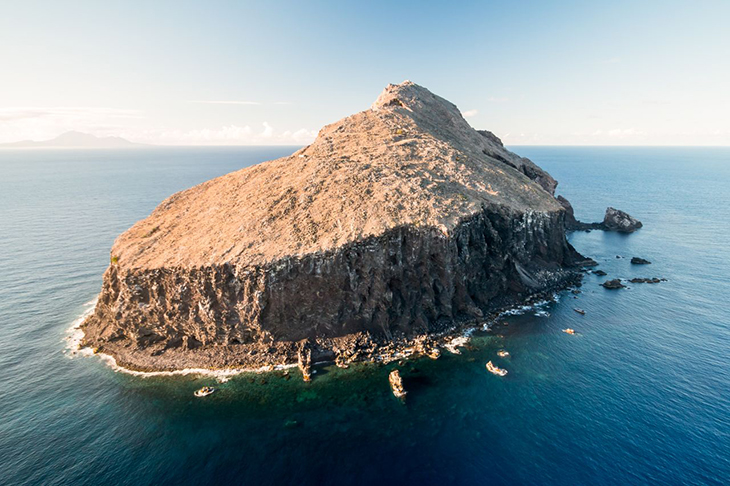
Redonda, once a scarcely known Caribbean island, underwent a remarkable transformation from a desolate land infested with goats and rats to a pristine sanctuary, flourishing with re-wilded habitats for seabirds and endangered plant species.
This island is just one example of many remote islands across the globe that, with human intervention, managed to rid themselves of invasive species and invasive plants, allowing them to support the natural environment around them – the land, water, and air.
In 2020, a report by World at Large highlighted a significant success in the realm of biodiversity conservation. While several of the Aichi global targets for biodiversity protection had fallen short of their deadlines, one target stood out as a triumph: the eradication of invasive species on small islands. Redonda was already a success story by then, and local non-governmental organizations were advocating for its official designation as a nature reserve.
Isolated for centuries since its discovery by Columbus, Redonda had become a hub for guano collection, utilized for fertilizing fields and producing gunpowder. However, along with human activity came the introduction of domesticated animals—specifically goats and rats on Redonda. The rats preyed on the eggs of nesting booby and frigatebird species, while the goats devoured the island’s vegetation. The absence of vegetation left the soil vulnerable, causing the island’s edges to crumble into the sea, disrupting the marine food web.
As cliff nests were destroyed, and rats roamed freely, the birds abandoned the island. Without vegetation, the ecosystem could not regenerate, leading to the starvation of the goats. Redonda turned into an eerie, silent wasteland.
In 2016, Antigua and Barbuda, the nation to which Redonda belongs, initiated a campaign to eradicate rats from the island. After the eradication efforts, nature was left to take its course, and the island began its slow journey to recovery.
“That’s all we did. We just removed the species that were not supposed to be there and within months we saw the vegetation growing back – the island rebounding,” said Johnella Bradshaw, Redonda program coordinator for the Environmental Awareness Group (EAG). She is also an Antiguan NGO who heads the project.
“Up to this date, we haven’t planted anything, we haven’t reintroduced any species. We just removed the rats and the goats, and the island transformed right in front of our eyes,” she said when she spoke to CNN.
Fortunately, the 60 goats stranded on the mile-long island were spared. They were easily gathered by hand due to the absence of any bushes or trees on the island and subsequently relocated to the mainland.
Following this, a dedicated team camped on the island for a continuous two-month period, diligently trapping and poisoning rats. Astonishingly, 6,000 rats were discovered on the island, so numerous that the workers could hear their hurried movements around their tents at night.
Since 2018, there have been no reported sightings of rats on the island. This absence allowed 15 species of sea birds to make a triumphant return, and the population of the Redonda green dragon—a splendid native lizard—soared by an incredible 1,300%. Additionally, the native vegetation experienced a remarkable recovery, with a 20-fold increase, including the growth of tree species such as Ficus.
This remarkable transformation spurred the Antiguan government to establish the Redonda Ecosystem Reserve, encompassing 30,000 hectares of land and sea. This reserve includes the small isle, its surrounding seagrass meadows, and a 180 square-kilometer (69 square-mile) coral reef.
What are your thoughts? Please comment below and share this news!
True Activist / Report a typo


